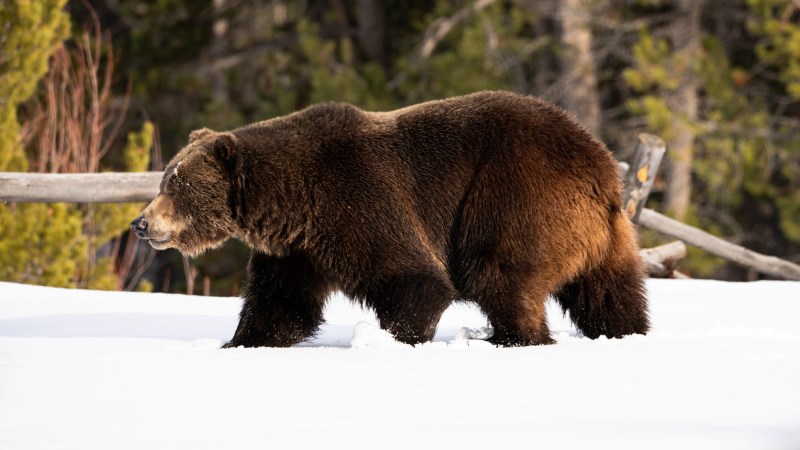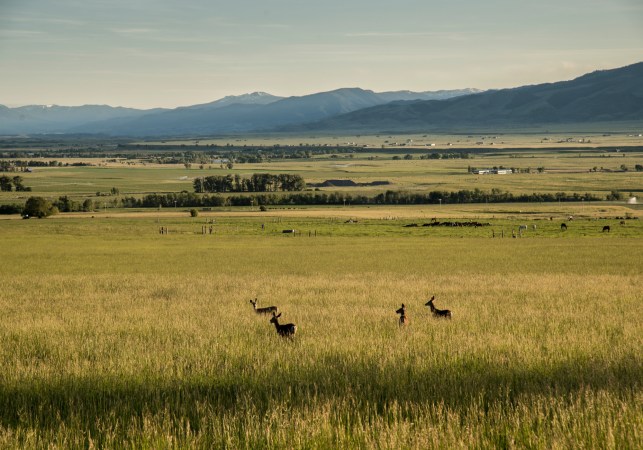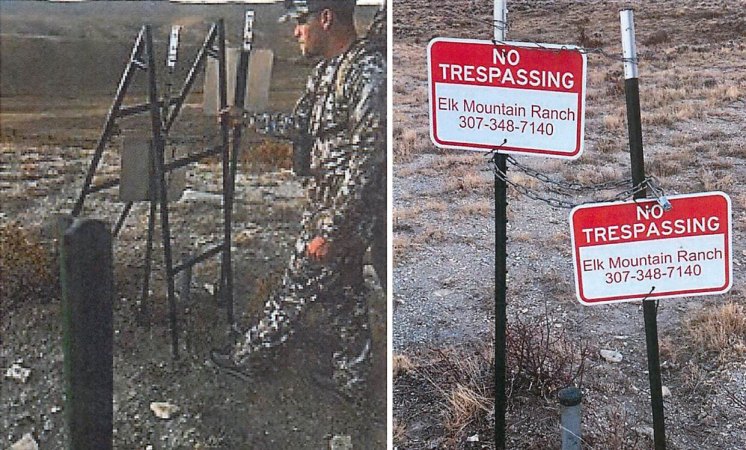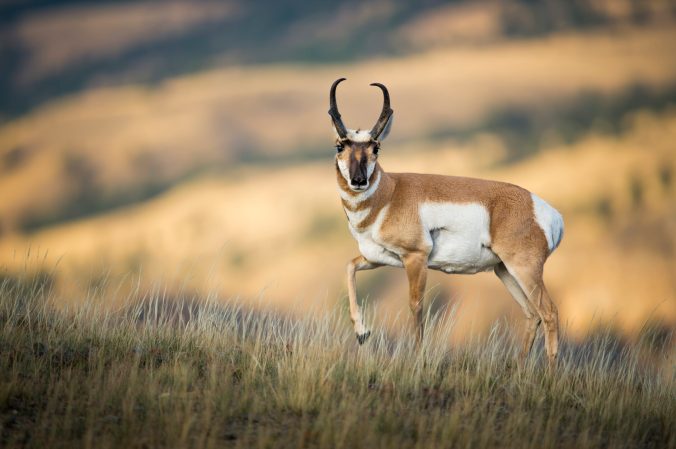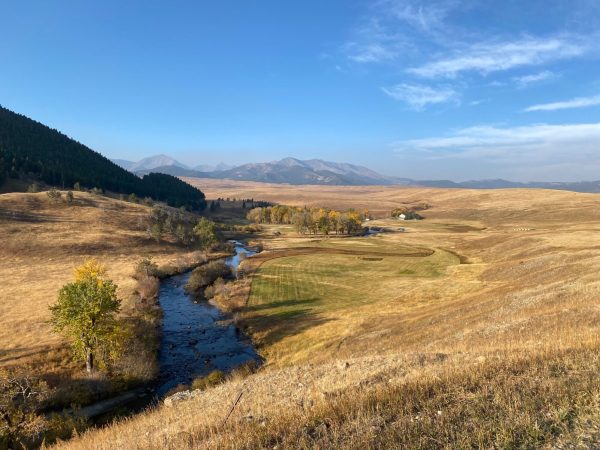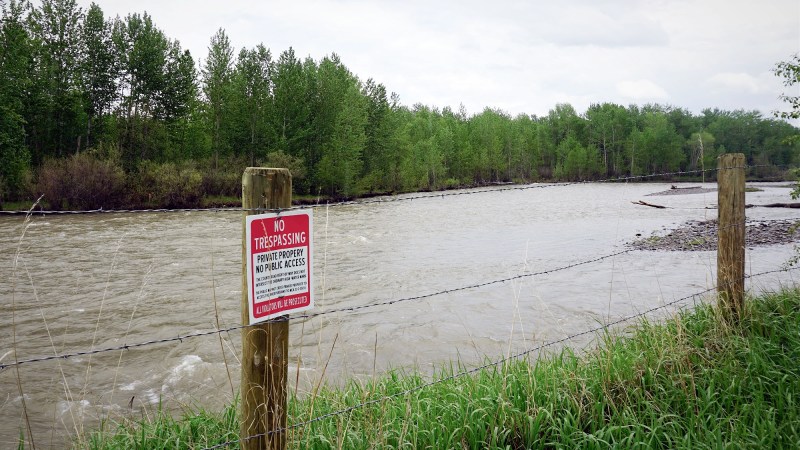An innovative new program in Montana’s Paradise Valley will pay ranchers for the periodic presence of elk on their ground, raising questions about who, if anyone, should underwrite the impacts of public wildlife on landowners’ grass, hay, and fences.
A number of landowners around the West don’t concern themselves with the implications of that question, preferring to profit from elk by leasing their land to outfitters or other paying hunters. For them, the grass-eating, fence-busting impacts of elk are offset by the commercial value of big bulls during hunting season.
Many state wildlife agencies similarly don’t pay for impacts of big game on private land. Agencies insist that the presence of wildlife is a condition of the land, and that management responses, including public hunting, are the preferred tools to reduce populations of meddlesome wild ungulates.
But hunting seasons occupy only a portion of the year, while elk occupy private land in the valleys north of Yellowstone National Park for longer every year as public-land habitat has become less productive, and as wolves and bears roam farther from the protections of the national park. Valley-floor field and pastures have long been favorite winter range for Yellowstone’s elk, but ranchers note that herds are staying longer into the spring, and some are spending the entire summer on irrigated hay pivots where they’re largely protected from public-land hunters as well as large carnivores.
The net result of these changes is that elk occupancy has become onerous on many of the working ranches in Paradise Valley. Unlike many Western valleys that are being carved up for rural subdivisions or amenity ranches, Paradise Valley, which starts at Yellowstone Park’s northern boundary and follows the Yellowstone River north to the town of Livingston, still has an abundance of open space provided by multi-generational ranchers.
But tolerance for elk is less abundant. When listing economic pressures on their operations, ranchers cite elk for impacting agricultural forage and fences, and for their ability to transmit the bacterial disease brucellosis to livestock.
A Montana non-profit is testing a novel approach to elk residency on Paradise Valley ranchland in the hopes that by paying landowners for tolerating elk, working ranches can remain profitable and elk numbers can be maintained in one of the West’s most iconic landscapes.

Photograph by William Campbell-Corbis / Getty Images
The Bozeman-based Property and Environment Research Center last month announced a program called “Elk Rent,” in which private funds are used to compensate ranchers for providing elk habitat. PERC’s payment-for-presence program combines cameras powered by artificial intelligence with landowners’ knowledge of their ground to quantify “elk days” that are then eligible for payments. The more elk for longer durations, the more ranchers can make in occupancy payments, which are capped at $12,000 annually.
It’s not the first time PERC has offered a market-based solution to a nettlesome wildlife issue. The group previously created an insurance indemnity fund to pay Paradise Valley ranchers for the impacts to their operation created when brucellosis is transmitted from wild elk to domestic cattle. But the “Elk Rent” model has implications that run through common themes related to wildlife management, including the role of public hunting, tolerance for wild ungulates, and even the carrying capacity of public land that’s not actively managed by the Forest Service and other land-management agencies.
“In the years of outreach that PERC has done with ranchers in the valley, it became really clear that what keeps them up at night is elk,” says Whitney Tilt, a PERC fellow and coordinator of the Paradise Valley campaign. “When it comes to wolves, bears, endangered species, or hunter management, landowners have support and flexibility and people they could call for assistance. But when it comes to elk, the state says, ‘Aren’t you glad to have them? By the way, they’re not yours and we’ll tell you what you can do with them.’”
Consequently, ranchers tend to get all the problems and little of the benefit from elk, says Brian Yablonski, the CEO of PERC, whose mission is the pursuit of applying free-market economics to natural resource issues.
“Elk are often viewed as uninvited guests on a rancher’s property,” Yablonski says. “Ranchers are essentially feeding the elk at great personal expense. Ultimately, we need these private open lands to remain intact if we want to preserve this unique migratory ecosystem, and paying ranchers ‘elk rent’ for providing this public good is a critical step toward accomplishing that.”
Camera Traps and Artificial Intelligence Helps Calculate Rent
PERC is partnering with Montana-based Grizzly Systems to set up detection cameras to record the presence of elk on Emigrant Peak Ranch, the first ranch to participate in the pilot project. Cameras, powered by artificial-intelligence software that can learn over time to identify elk out of a mosaic of other animals, record when elk move onto the ranch’s fields and when they leave, if they leave at all.
Once the cameras document at least 20 elk in a single 24-hour period, that “elk day” is then eligible for payment. When populations increase to over 100 elk in a single day, the payment similarly increases. (Payments are variable depending on factors like time of year and whether elk are grazing native pasture or high-value crops like irrigated alfalfa.)

Photograph by Tandem Stock / Adobe Stock
PERC hopes to expand the initial effort to other ranches in Paradise Valley. Funding for the pilot comes from Spruance Foundation, and Greater Yellowstone Coalition.
Tilt says the initial reception among Paradise Valley ranchers has been positive, with several keeping tabs on the success of their neighbor’s pilot project.
“These ranchers are getting pressure from just about every direction,” notes Tilt. “Land prices are skyrocketing, the cost of maintaining their businesses is increasing. Many of these ranchers already have some sacrifice zone that they give over to elk in the winter in the hopes that they can keep them away from where they’re calving in the January-to-April time period. And many ranchers recognize that elk are increasingly common on lower-elevation private land. That may be a combination of the increase in activity on public land, even outside of hunting season, or an increase in large carnivores, or because range conditions on public land are deteriorating.
“Often hunters will say that landowners are drawing elk down onto private ground, but we don’t think that’s a valid claim,” says Tilt, “because there’s no more land under irrigation now than there was when the Yellowstone [elk] herd was at its zenith, but even with reduced elk numbers, ranchers are seeing more and more of them on their ground. For whatever reason, elk are coming to these ranches, and increasingly they’re not leaving.”
The Role of Public Hunting in Montana Elk Managment
The situation begs the question: Can’t hunters be deployed to keep crop-eating elk off private ranchland? It’s a tool that’s been tried on many ranches, several of which are enrolled in Montana Fish, Wildlife & Parks’ Block Management hunter access program. But Tilt notes that the presence of huntable elk on these ranches is neither constant nor predictable.
“The vast majority of these ranches provide hunting to the public,” says Tilt. “It’s not necessarily to hunters from Bozeman who walk up and knock on their door, but rather to teachers and firefighters, and members of the local community. The problem with managing hunting is that elk move seasonally, and even week to week. So they might be here today, but by the time a hunter comes out, they’re gone. Ranchers have additional problems with hunters who might shoot one or two elk, but then push the rest of the herd through fences, creating more problems than they’re solving.”
Tilt says solutions have to extend well beyond hunting seasons.
“This is an overly broad generalization, but most hunters think that ranches are owned by rich people from Texas, or that they’re outfitted or leased,” says Tilt. “But what seldom comes up in these discussions about ranches and wildlife is the huge cost to the landowner when you put 50 or 100 elk that each eat a half an AUM [or animal unit month, a way of quantifying the amount of forage a cow and calf consume] on the same ground where you’re trying to manage your livestock. We observed that ranchers are feeding a lot of mouths they have no control over, and that there haven’t been a lot of tools in the toolbox to manage that impact.”

Photograph by Danita Delimont / Adobe Stock
That’s where the “Elk Rent” program hopes to provide some sort of scalable alternative to either hazing elk off private land or profiting from the presence of elk by leasing to a hunting outfitter.
While the pilot program currently is concerned with a single ranch, the expansion of the cash-for-occupancy model is worrisome to some Montana hunters. Some are concerned that public funds might be tapped for payments, and others have expressed apprehension that landowners might be incentivized to harbor elk on their lands in order to qualify for more cash payments.
“We appreciate PERC’s innovative attempts to encourage private-land conservation, but we don’t believe that wildlife tolerance necessarily warrants monetary compensation,” says Jake Schwaller, board member of the Montana Chapter of Backcountry Hunters & Anglers. “The ‘Elk Rent’ pilot program is intriguing, but we question the scalability and worry about the precedent this may set.”
Schwaller notes that, based on a famous 1940 court decision, living with and accepting wildlife on a ranch, quite literally, comes with the territory.
“We acknowledge that, as the State of Montana so eloquently put it in State v. Rathbone, ‘A property owner in this state must recognize the fact that there may be some injury to property or inconvenience from wild game for which there is no recourse.’ We think it’s best to concede this while working collaboratively to use some of the many tools already available to reduce impacts of our wildlife.”
Meanwhile, Tilt says PERC is actively looking for additional private funding sources to extend the “Elk Rent” pilot into next year, and perhaps in other areas of Montana.
“In talking with ranchers up in the Blackfoot [Valley of northwest Montana], where they’re covered up with wolves and bears, and where they’re doing trumpeter swan releases, and where they’re managing bull trout redds on their private ground, the number one issue those ranchers cite also has three letters: E.L.K. So we think there are other places where the ‘Elk Rent’ model could work.”
A correction was made on Jan. 8, 2024: A previous version of this article stated that the Rocky Mountain Elk Foundation contributed funds to elk rent. RMEF has contributed to brucellosis mitigation efforts and projects with Montana’s Outdoor Legacy Foundation in Paradise Valley, but not elk rents.



